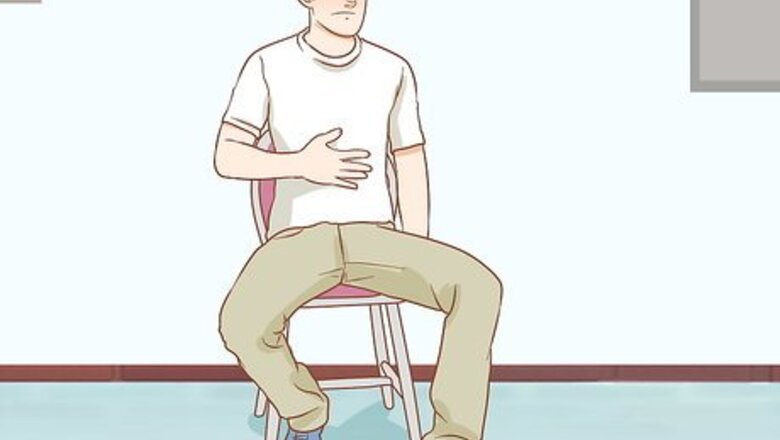
views
Getting Immediate Relief
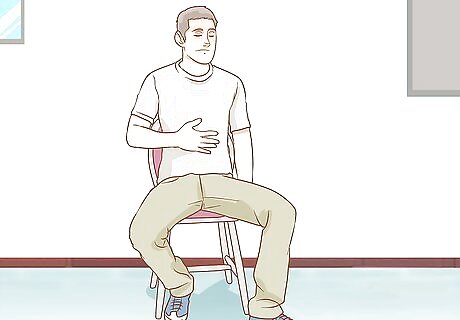
Sit and try to relax if you feel nauseous. Moving around can make nausea worse, so take a few minutes to sit still. It might feel hard, but try to think about something other than your nausea, which can help make you more comfortable and less likely to throw up. Staying Still and Relaxing Sit upright, in a comfortable position. Avoid lying down, especially if you’ve just eaten. Take slow, deep breaths into your nose and out through your mouth. This can help calm anxiety and keep motion sickness in check. Get your mind off your queasiness. Think about a calm, soothing place, like a comfortable place from your childhood, or imagine yourself sitting in a picturesque field on a perfect spring day.

Drink a hot cup of water or soothing tea such as chamomile tea. Heat a cup of water, or if possible, brew a hot cup of tea, and sip it slowly. Chamomile has been used to relieve nausea and a variety of other health issues for centuries. It relaxes the digestive system, lowers stomach acid, and may help calm nervousness or anxiety. Go with a caffeine-free herbal chamomile tea. Caffeine could make your upset stomach worse.
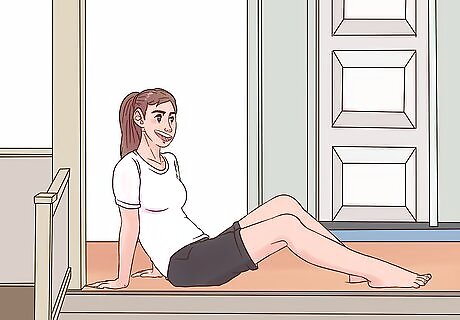
Open a window or go outside to get fresh air. If you can make it outside and the weather allows, try sitting on your porch or patio. You could also sit by an open window if you can’t make it outside. Fresh air could help, but keep in mind hot, humid weather or bright, direct sunlight might make matters worse.
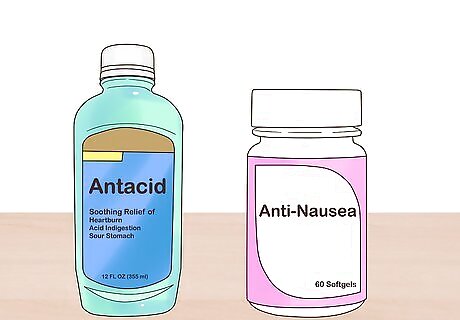
Take an antacid or anti-nausea medication. An over-the-counter medication can offer relief from nausea, and you can even take one before an activity that you think might cause queasiness. If nausea is an ongoing problem, your doctor might recommend a prescription anti-nausea medication. Remember to take any medications as directed by the doctor or the label’s instructions. What Medications Should I Try? Brands like Pepto-Bismol and Kaopectate, which are bismuth salicylate, can help settle your stomach right away. Use dramamine 30-60 minutes before an activity that might cause nausea or motion sickness, like going on a rollercoaster or a twisting road. Avoid taking multiple anti-nausea medications at the same time, and never take more than the recommended dosage amount.

Try using ginger to settle your stomach. Sip ginger tea, or chew or suck on natural ginger candy to calm your stomach. Ginger contains substances that may promote digestion and relieve nausea. You could peel and slice a 2 in (5.1 cm) piece of ginger root, then boil the slices in 1 c (240 mL) of water to make a tea. Strain out the slices or, if you’d like, chew on them once they’ve cooled. Low-sugar natural ginger ales can also help settle a queasy belly. However, be sure to avoid soft drinks that contain caffeine.

Suck on hard candies with pleasant aromas. Try lemon, ginger, or peppermint hard candies to take the edge off your nausea. Hard candy is also helpful if you have a bad taste in your mouth that's aggravating your queasiness. Essential oils in these flavors may also have some anti-nausea properties. Look for natural candy options at your local health food store.

Distract yourself with your favorite book, podcast or TV show. Wait out your nausea by using the power of distraction. Put on comfortable clothes and perform a relaxing, sedentary activity you enjoy. You may find that after about 20 or 30 minutes, your nausea has passed.
Making Dietary Adjustments

Choose bland foods that are easy on your stomach. You might not feel like eating when you’re nauseous, but swallowing some plain-tasting food may help absorb stomach acids and calm your stomach. If nothing else, you should avoid overly sweet, spicy, and fatty foods, which can trigger nausea. Settle your stomach with bland, calming foods like: Plain crackers (such as Saltines)BananasRiceApplesToast

Drink water with your meals to promote digestion. Help your body dilute acidic digestive juices and absorb nutrients by drinking a glass of water 1-2 hours before you eat. Then, sip some water with each meal if you continue to feel nauseous. This helps create softer bowel movements, which can ease constipation-related nausea.

Eat cool or room temperature foods. Let your food cool slightly or opt for raw fruits and veggies instead of hot foods when you’re feeling ill. Hot foods can have strong smells, which may worsen nausea or vomiting if you have a sensitive stomach. Foods with minimal smells, such as crackers, may be more palatable to you than foods with strong odors.

Get tested for food intolerance and allergies. Talk to a doctor about allergy testing if you notice that certain foods consistently make you feel nauseous. Skin testing can help pinpoint any food allergies that may be setting off your sickness. Typically an allergist performs a scratch test to determine your sensitivity to different foods. It’s best to avoid taking antihistamines before your appointment for the most conclusive testing. Your doctor may also have you try a food elimination diet to see if you are sensitive to certain foods such as gluten, dairy, soy, peanuts, eggs, and corn.
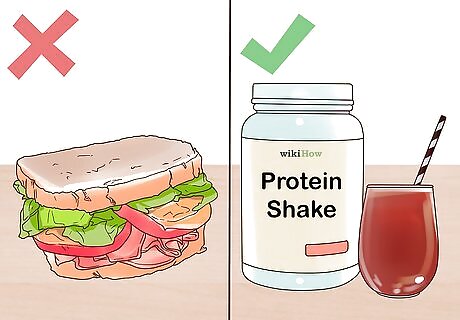
Switch to a low-fiber diet before any nausea-inducing activity. Opt for low-fiber foods, such as refined hot cereals or juices, if you notice your nausea worsens while working out. These foods digest quickly, moving out of your stomach faster. Most people experience less nausea on an empty or partially-full stomach than a filled one. For example, if you’re prone to vomiting during track practice, try swapping a protein shake for your regular turkey sandwich. Your liquid lunch will get digested more quickly and is less likely to nauseate you.

Drink your recommended intake of fluids daily to stay hydrated. Water and other healthy fluids promote good digestion, which can help you avoid vomiting. Staying hydrated is especially important if you’ve been vomiting a lot, or are experiencing nausea. Dehydration can make nausea worse and, in turn, persistent vomiting can make dehydration worse. Drinking Fluids to Avoid Vomiting If you’re a man, drink 15 ⁄2 c (3.7 L) of fluids per day.If you’re a woman, drink 11 ⁄2 cups (2.7 L) of fluids per day. Avoid drinking electrolyte or sports drinks frequently. The high amounts of sugar can actually cause nausea for some people. Other fluids to try: ginger ale, mint tea, lemonade, or sucking on ice chips.
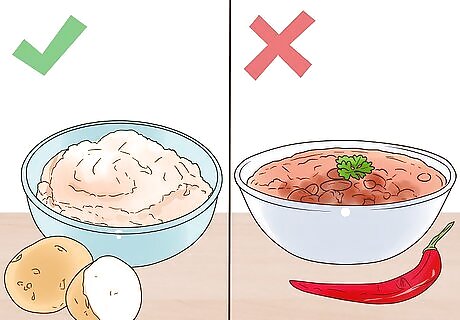
Gravitate towards appealing foods as needed. Stick to whatever foods sound best to you if you find you’re feeling very nauseous. Sometimes comforting foods can be more palatable and agreeable to your stomach. For example, choosing a bland food you love, say mashed potatoes, may ease your nausea more than choking down a piece of toast for the sake of eating something plain. It’s still a good idea to avoid overly sweet, spicy, or fatty foods, which can cause stomach upset.

Eat a few crackers before getting out of bed for morning nausea. Keep a sleeve of plain cracker on your bedside table if you often feel sick upon waking up. Having something plain in your belly before waking can increase your blood sugar and keep nausea at bay. This is a great technique for mothers suffering from morning sickness or patients undergoing chemotherapy.
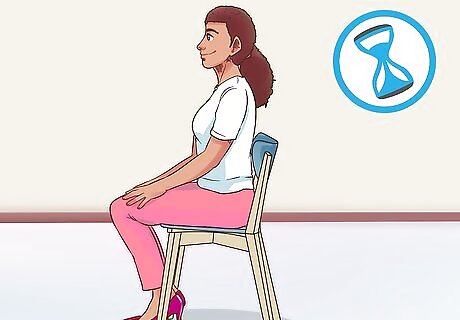
Sit upright for an hour after eating a meal. Encourage your food to settle by sitting up and letting gravity aid digestion after eating. Avoid performing intense exercise or lying down right after a large meal, as these can bring on nausea. If you already feel nauseous and lying down feels best to you, try lying on your left side, which increases blood flow, rather than lying on your right side.
Establishing Stomach-Settling Habits

Reduce your stress level by meditating. Meditate to reduce your adrenaline and anxiety levels, which can both cause nausea and vomiting. Sit or lie down comfortably with your eyes closed, focusing only your breathing for 10 minutes. Try to clear your head of any thoughts causing you stress and release physical tension in your body. Try a guided meditation app, such as Relax By Andrew Johnson, if you’re just starting out with meditation. It's okay to be scared. "Sometimes I feel nauseous at night. I don’t get this often, but when I do it’s scary. Learning to rub my belly and breathe deeply really helped me feel better." - Madison B. Small changes make a big difference. "Taking deep breaths in and out and rubbing my tummy helped me feel less nauseous. Thinking of a place like snowy mountains or a beach where you can hear waves crashing actually helped!" - Tayla S. Finding what works for you makes a big difference. "I was coming off long-term antidepressants and I learned that the smell of lemons helped me feel less nauseous. I cut up lemons, put them in a Ziplock baggie, squeezed some juice on a paper towel, and kept it folded in there. Whenever I felt nauseous, I just opened the bag and inhaled and the urge went away." - Shannon R. Water and candies helped me. "I've learned that drinking water and sucking on candies helps me when I feel like I need to throw up. Now I'm in a lot less pain!" - Jacklyn S. We want to hear from you! Advice from our readers makes our articles better. If you have a story you’d like to share, tell us here.
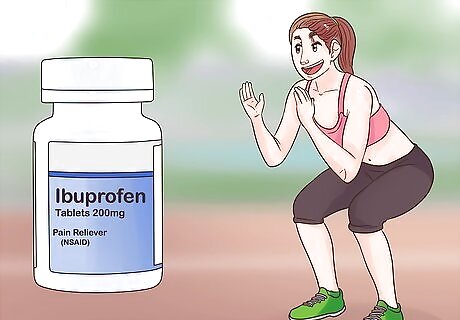
Avoid using NSAIDS before exercise. Take NSAID medications, such as acetaminophen and ibuprofen, after you exercise rather than before. Using these medications before exercise can trigger vomiting, as they are hard on your stomach. This is especially true if you participate in endurance sports, such as marathons or triathlons.

Take breaks on long drives. Settle your stomach by pulling over at a rest stop once every hour if you tend to get nauseous in the car. Taking a break from the blurring scenery and putting your feet on firm ground for 5 minutes can decrease nausea and help you feel normal again.
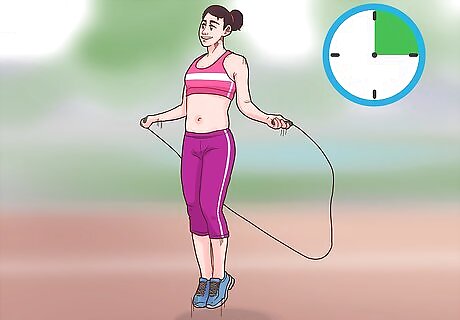
Warm up and cool down from your workouts. Spend 15 minutes performing gentler exercises before and after your main workout to help your stomach adjust to your movements. Abruptly stopping or starting intense exercise can bring on nausea and vomiting. Walking or jumping rope are great ways to ease into or out of your workout.
Using Medications and Alternative Therapies

Talk to your doctor about prescription anti-nausea medications. Discuss Odansetron, Promethazine, and other anti-nausea medications with your doctor to see if these can ease your sickness or vomiting. Whether your nausea is caused by chemo or morning sickness, many of these can take the edge off your queasiness and help you go about your day. Always tell your doctor what other medications and supplements you are taking so they can manage your medication regimen. Do not take multiple anti-nausea medications at the same time, as this can have serious side effects. Tell your doctor if you are pregnant or nursing so they can weigh the benefits and risks of using prescription anti-nausea medications.
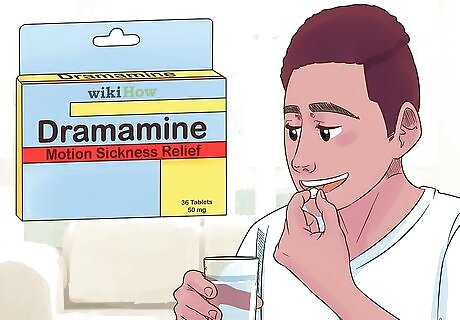
Use Dramamine for occasional seasickness. Take 1 pill of over-the-counter anti-nausea medication, such as Dramamine, about half an hour before participating in any activities that make you feel motion-sick. Adults and children over 12 can take Dramamine every 4-6 hours as needed to reduce sickness after nausea has set in. Talk to your child’s pediatrician to determine if Dramamine is safe for your child under 12.
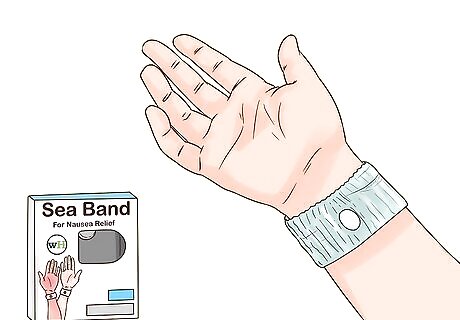
Wear acupressure bands on your wrists. Stimulate the P6 acupressure point—thought to relieve nausea—by wearing acupressure cuffs, such as Sea Bands. These bands have no known side effects and are safe to wear throughout the day, if they help you. You can also stimulate this pressure point without a band by pressing about 2 finger-widths down from the crease on the inside of your wrist.
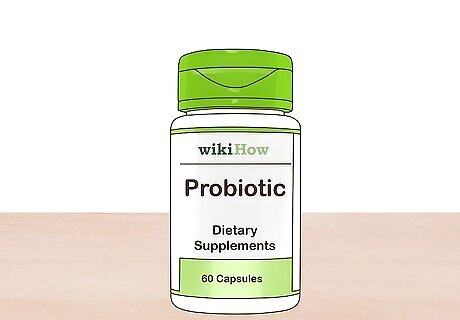
Take a probiotic. Probiotic supplements may help in the treatment of acute nausea and vomiting. These work by helping to restore the microbial ecosystem in your GI tract. There are many types of probiotics available from most pharmacies and drug stores, and each may be formulated to help with specific issues. Take the supplement as indicated on the packaging, or as otherwise directed by your doctor.
















Comments
0 comment